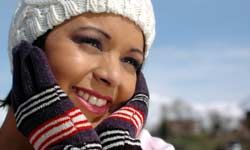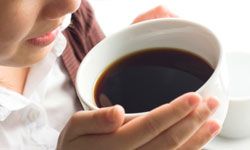Few people look forward to the gray days and long, dreary nights of winter. In fact, most people feel better in the summer, when the days are longer, sunnier, and warmer. We get out more, exercise harder, and eat less. But for some people, the transition from summer to winter triggers feelings of depression.
For these individuals, the change in seasons signals a marked change in personality -- from happy (or at least okay) and relaxed to depressed and tense. They may have trouble getting out of bed in the morning, concentrating, and moderating their eating (especially when it comes to carbohydrates, which they crave). They lose interest in the activities that they ordinarily enjoy, and they may feel irritable and down. Then, when spring comes, they feel like themselves again.
Advertisement
Until the 1980s, people suffering from this seasonal change in personality had no idea what was wrong with them. But then Norman E. Rosenthal, M.D., who worked at the time at the National Institute of Mental Health, made the connection between the shorter, darker days of winter and the onset of seasonal depression. He and his colleagues began studying this phenomenon and gave it the name seasonal affective disorder (SAD). It has since been added to the primary diagnostic manual for mental health conditions.
Nobody knows what causes SAD. Experts believe that light plays a part, and that exposing people with SAD to extra light sometimes improves their mood. The hormone melatonin also appears to be involved. In animals, melatonin regulates hibernation. Melatonin is secreted in the dark, and humans have more of it in their bloodstream during winter than summer. In fact, when scientists administer melatonin to research subjects, their body temperatures decrease and they become drowsy. Scientists further speculate that people with SAD often benefit from light therapy because light shuts off melatonin production.
SAD appears in varying degrees. Some people feel mildly depressed; others are so depressed they require hospitalization. In others, mood is unaffected, but their energy levels are so low that they aren't able to accomplish the things they would like to or would normally be able to during other seasons.
So what can you do about SAD, short of taking a warm weather vacation every few weeks during the winter? The home remedies on the next page may help.
This information is solely for informational purposes. IT IS NOT INTENDED TO PROVIDE MEDICAL ADVICE. Neither the Editors of Consumer Guide (R), Publications International, Ltd., the author nor publisher take responsibility for any possible consequences from any treatment, procedure, exercise, dietary modification, action or application of medication which results from reading or following the information contained in this information. The publication of this information does not constitute the practice of medicine, and this information does not replace the advice of your physician or other health care provider. Before undertaking any course of treatment, the reader must seek the advice of their physician or other health care provider.





